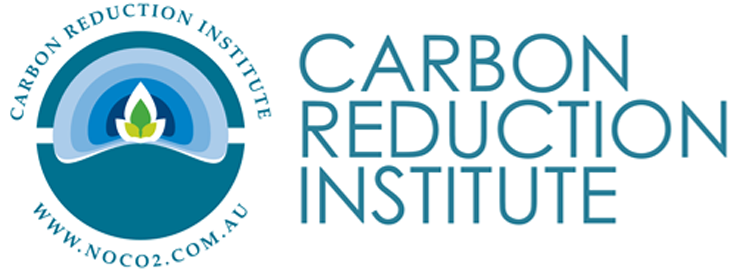
What about Solar?
The Small Scale Renewable Energy Scheme (SRES)
The SRES creates a financial incentive for individuals and small businesses to install eligible small-scale renewable energy systems such as solar panel systems, small-scale wind systems, small-scale hydro systems, solar water heaters and air source heat pumps. It does this through the creation of small-scale technology certificates which Renewable Energy Target (RET) liable entities (usually large electricity retailers) have a legal obligation to buy and surrender to the Clean Energy Regulator on a quarterly basis.
Small-scale technology certificates (STCs) can be created following the installation of an eligible system, and are calculated by the amount of electricity a system produces or displaces. Owners of renewable energy systems are able to create and sell the STCs themselves but in practice, installers of these systems usually offer a discount on the price of an installation, or a cash payment, in return for the right to create the STCs.
System Elgibility
Under the SRES, eligible small-scale renewable energy systems may be entitled to STCs, which can be sold to recoup a portion of the cost of purchasing and installing the system.
Small-scale renewable systems which may be eligible for certificates include:
- solar photovoltaic (PV) panels
- wind turbines
- hydro systems
- solar water heaters, and
- air source heat pumps.
The solar financial Incentive subsidises the upfront cost of installing a solar power system and is not means tested in any way.
The criteria to claim are:
- Your system is less than 100kW in size.
- You get it installed and designed by a Clean Energy Council accredited professional.
- You use panels and inverters that are approved for use in Australia by the Clean Energy Council.
Small-scale Technology Certificates (STCs)
Under the SRE S, eligible small-scale renewable energy systems are entitled to a number of STCs. The number of STCs that can be created per system is based on its geographical location, installation date, and the amount of electricity in megawatt hours (MWh) that is:
- generated by the small-scale solar panel, wind or hydro system over the course of its lifetime of up to 14 years, or
- displaced by the solar water heater or heat pump over the course of its lifetime of up to 10 years.
As a guide, one small-scale technology certificate is equal to one megawatt hour of eligible renewable electricity either generated or displaced by the system. You can calculate the number of small-scale technology certificates a system may be eligible for by using the Clean Energy Regulator small generation unit calculator and solar water heater calculator by clicking here.
Once created and validated, these certificates can be sold to recoup a portion of the cost of purchasing and installing the system, or transferred to other individuals and businesses at a negotiated price. The STC price fluctuates on the open market depending on supply and demand. The current STC price at the time of writing (3rd March 2017) is at the spot for $40, the maximum price for which STCs can trade. At the current STC spot price, the financial incentive is worth roughly $700 per kW installed. The more qualifying solar panel installations that are completed, the higher the number of STC’s that are created. When the supply of STC’s increases, the price of STC’s would be expected to decrease.
A few years ago, when there was a prevailing belief that the government was going to scrap the rebate entirely and the resulting increased demand for solar installations caused the price of STC’s to below $18.00. That is less than half of what they are now trading for which means the financial incentive for installing a small scale solar system then was also less than half of what it is now. Given that STCs are currently trading near their maximum price of $40 installing a small scale solar system now would see you maximise the financial incentive for installation.
What is the feed in tariff?
The solar financial incentive is a federal government program which creates STCs on SRESs and the feed-in tariff is a state government financial incentive. In the past solar was sold on the basis that you would eliminate your energy bill and in addition to that you would get paid for your excess electricity fed back into the system. This is no longer the case as the current feed in rates are much lower but you can still significantly reduce your electricity bills with solar.
Shop around for the best feed-in tariffs. They can vary from 0c to 12c depending on the retailer.
What size Solar system do I need?
Before providing you with a quote, solar consultants should do a full analysis of your electricity usage, looking at when and how much electricity you are using. They need to understand your needs and usage to recommend the right system for you. In addition to usage they should understand your financial goals and how much you’re willing to spend in order to achieve them, because it’s not as simple as purchasing a solar system that matches your energy usage.
Shop around, make sure you get value for money and ensure that Solar is right for you
Getting multiple quotes will help protect you from being overcharged or sold a system that does not meet your needs. It also gives you a better understanding of the costs of installing solar and whether solar is right for you.
Warranties
There are four separate warranties that you get with a solar system. There is the ‘performance warranty’ and the other three are for the inverter, the panels and for workmanship. It is best to have your warranty backed by an Australian business and you should look for the following asa minimum:
- 10 year warranty for your inverter
- 10 year warranty for your solar panels, and
- 5 year warranty for the workmanship.
What about solar power storage batteries?
Solar battery storage does not currently pay for itself. For example, the Tesla Powerwall has a 15 years payback period while the unit is warranted for 10 years. It is expected that the price of solar battery storage will continue to drop, but that should not stop you from installing a small scale solar system now. A correctly designed solar system, even without batteries, can save you a large percentage off your energy bills.
When batteries do become financially attractive to install they can easily be added to any existing solar system using a method called AC coupling. Therefore there is no need to wait for battery technology to improve before getting solar.
Tips for purchasing and using a solar system
If you are on a limited budget get a premium inverter over premium panels. The inverter is the most likely component to fail in the first 10-15 years. This is because they work hard all day, and they do wear out.
The financial incentives created by STCs are based on the number of panels, not the size of the inverter. This often makes adding panels over and above the inverter rating very worthwhile. It is safe and approved by the regulators (up to 133% of inverter capacity).
Use timers on your washing machine, dishwasher, hot water system and pool pumps so they run during the day. By switching energy usage to the daytime, you will increase your returns on a solar system.
